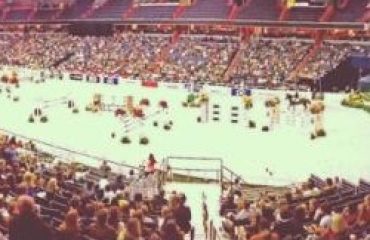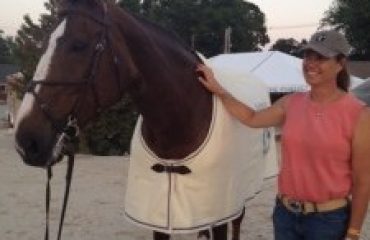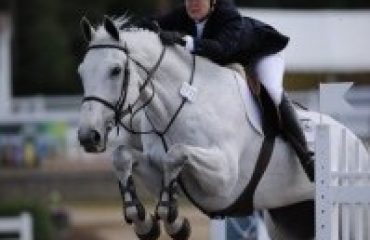What’s your approach to training through the winter?
For me, training in winter is about fitness and about getting the horses conditioned for the upcoming season. The reality is that we won’t be competing again in the immediate future, so we need to slightly adjust our training program with less focus on drilling the dressage tests, and more about developing overall strength and suppleness.
A lot of horses in my program have a vacation in November and December and are back in work come January, and won’t be heading to a competition until February or March. I think with the training of the horses in the winter months, it’s partly about conditioning and partly about training.
Conditioning or something different than dressage every second day is important for the horses in my program. This might be hacking on the roads or doing a bit of trot and canter work on the track, or any sort of exercise that’s going to build a bit of a base of fitness for the coming competition season. To me, this is also good mentally for the horses as I feel just drilling them day in and day out in the flat work can leave them quite sour. As we live in hunt country, we have also been known to take the horses out hunting, which is useful for their fitness and can make them a little more bold.
For me, the training of the horses for dressage during the winter is a little bit more about throughness and suppleness. The reality of competing in a show is still miles away, so I don’t focus too much on the actual movements. The bulk of my training is on getting the horse really using its body, getting it supple from head to toe and finding any blockage in its body. This creates great muscle and topline.
As winter progresses and the show season gets closer, I might introduce some test work in my training. For me, this is often the time of year I enjoy most as there’s less stress about getting to the next show and you can spend a lot of time working with your animal to create strength and suppleness before the season ahead.
A lot of the trot work in these early winter months would be in rising trot, taking pressure off the horse’s back and encouraging more swing. Exercise-wise, I like to do a lot of yielding and lateral work, which I think can help your horse get more supple. In the canter work, I do a lot of lengthening and shortening of the stride: making the horse bigger in the canter and then collecting and really sitting down behind, which is a great strength-building exercise.
Do you have any tips regarding winter apparel for riders?
I’ve had good fortune over the last years, especially here in America, finding winter breeches. I used to wear long underwear underneath my normal riding pants but there’s something about having two layers that can create rubs and feel uncomfortable. There’s some great technical winter riding wear out there that can really keep you warm and comfortable no matter what the weather. It’s worth investing in a few quality pieces because if you’re cold and your muscles are cramping up, you’ll be miserable and not very effective in the saddle. I’ve been lucky to ride with Ariat over the years and even though I’m an eventer, I’ve stolen the winter Western riding gear for my own wardrobe because I find it good, warm and hardy weatherproof clothing.
What are your thoughts about training on hard ground?
With training horses, I think it’s really important that they work on all different surfaces. This isn’t just from me as an event rider: My wife, Silva, is a dressage rider and my show jumping mates feel the same. If you’re on top-notch synthetic footing all the time, it’s better for the horses when you’re doing the more concussive training, but it’s also important to get them out in the woods, on hard gravel and on slippery footing. It strengthens the legs and makes them a bit hardy. You don’t want to get to a competition where the footing isn’t perfect and the horse is just not used to it and have the chance of injury be that much higher.
At our farm here at Windurra, we’re blessed with footing from Attwood Equestrian Surfaces in our jumping and dressage rings and on our gallop track; we also have a nice hard bitumen road that the horses go hacking on, and a quiet trail through the woods with a fairly even dirt surface. As a trainer, when I come up with the list of which horse is doing what each day, I make sure that they’re on a variety of surfaces.













